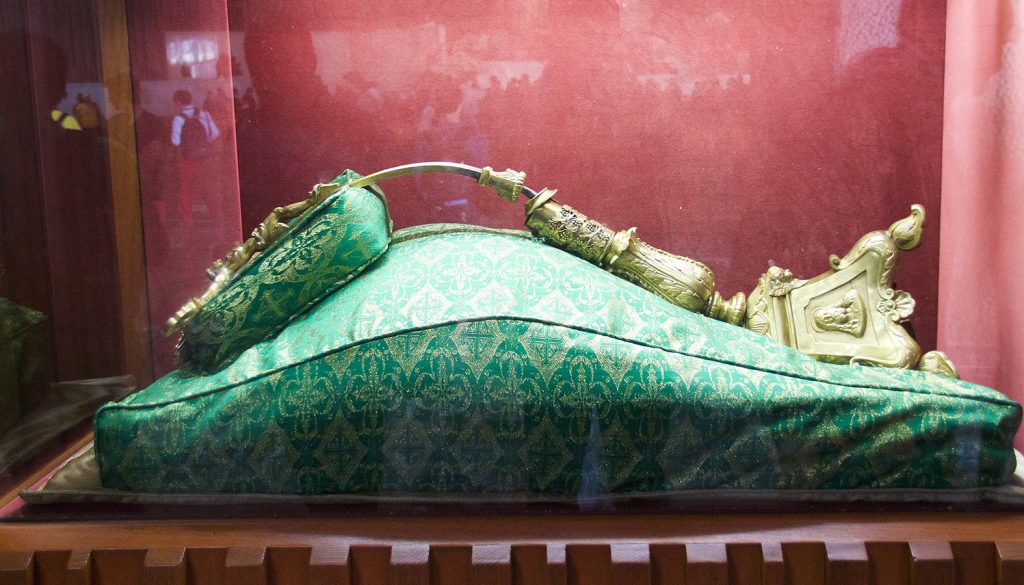The pro-abortion movement “Marea Verde” (“Green Tide”) originated in Argentina and is known for its attacks on churches. On Sept. 28, the movement sponsored protests across Mexico to legalize abortion in the predominantly Catholic nation.
Part of the protest largely ignored by mainstream media included vandalizing Mexico City’s cathedral by starting fires in front of the historic church. Female police who accompanied the feminist march carried fire extinguishers to put out the flames.
It is shocking to think that a religious and cultural symbol as revered as the cathedral would be subject to an attack like that, but I suppose there is a real congruence between those who want to destroy the child in the womb and those who reject religion.
If it were not about feminists, I suppose some people would be talking about a hate crime.
However, the nonbelievers think that the right to abortion is part of “basic morality,” as House Speaker Nancy Pelosi put it, hence the silence about the vandalism attempted by the pro-abortion protesters.
Mexico has a Catholic culture in spite of a distinctly anticlerical history since its colonial days.
The attack on the cathedral reminded me of a crucifix in the Basilica of Our Lady of Guadalupe. It is on display in a glass case near the back doors of the basilica and is made of brass. The crucifix was bent backward in 1921 during an attempt to destroy the image of Our Lady of Guadalupe with a bomb.
On Nov. 14 that year, Luciano Perez came to the old basilica and placed a bouquet of flowers at the foot of the altar of the image. He quietly left the church and the dynamite hidden in the bouquet exploded. The bomb destroyed all the vases on the altar, a few of the marble steps up to it, and some candlesticks. The crucifix was doubled back, but the glass covering the image was not even broken.
The popular understanding was that Christ had protected his mother, withstanding the force of the explosion. The attempt came during a tense time in Mexican history, in which the openly anticlerical revolutionary constitution set the stage for the persecution that would provoke the tragic Cristero revolt, which gave many saints to Mexico.
The history of that persecution in Catholic Mexico is not known by many people in the United States. A French historian has written several volumes about the Cristeros, but in English the most accessible standard reference is still Bishop Clement Kelley’s “Blood Drenched Altars.”
The would-be destroyer of the image, Perez, was arrested but left free after only a few days of detention. General Alvaro Obregon was the president at the time and was the patron of the murals of Diego Rivera, Clemente Orozco, and David Alfaro Siqueiros, which were nationalistic, communist and anti-Catholic in nature. The people of Mexico City protested the bombing attempt three days after the fact with a massive demonstration that preceded one of the high watermarks of public devotion to the image of Our Lady of Guadalupe. The shrine was closed for five hours in protest of the sacrilegious attack.
Every time that I have gone to the basilica in “la villa de Guadalupe,” I make sure to pray before the crucifix that was mutilated by the bombing. It reminds me of how closely the devil dogs the things of God. The distortion of the body of Christ on the cross is a symbol of the continuing birth pangs of the kingdom.
When I was in my new parish in Cleveland two weeks after my return from my assignment in El Salvador, two crack addicts broke into the church and destroyed the tabernacle, selling it for scrap metal, and the scattered hosts within it were probably dissolved in heavy rains in the thieves’ backyard.
I was sick about the profanation and did not sleep for a week. Then an older priest told me that Jesus’ body had suffered before, that it was implicit in the gift and mystery of transubstantiation that he would have to submit to cruel disrespect. “He can withstand it, there is no evil he has not foreseen.” His redemptive love covers us all.
May he have mercy on those who tried to profane the Cathedral of Mexico as their allies had attempted in Buenos Aires. May he also pardon and give light to all the reporters and analysts who ignore uncomfortable truths. His cross will always (eventually) triumph.

